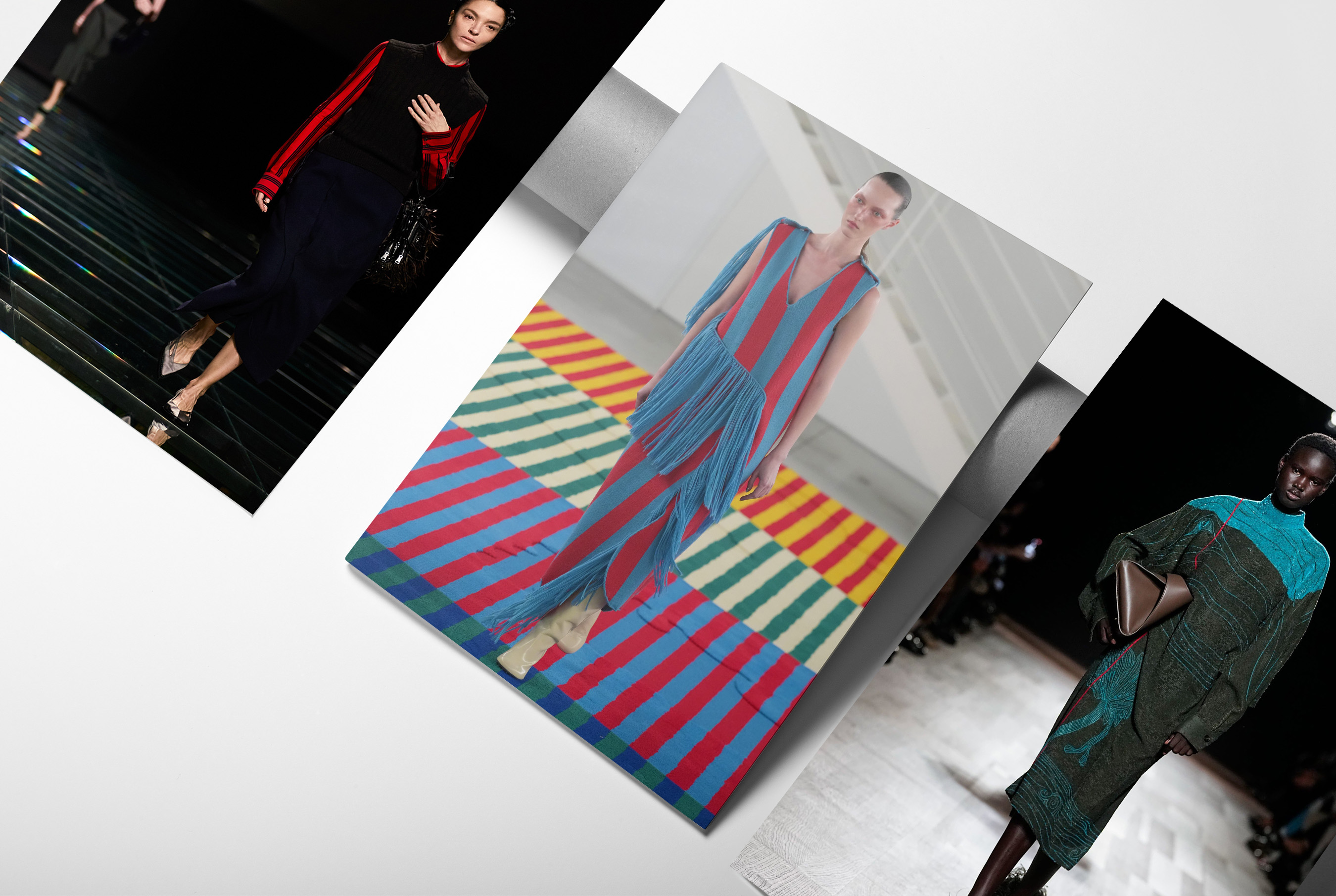Milan Steps Into a Pivotal Season Where Not-So-New Tenures Will Be Tested, and Tried-and-True Heritage Will be Up Against Shifting Perceptions of What Luxury Means Today.
By Angela Baidoo
In my analysis of the Fall 2024 season I observed, and somewhat praised designers, for refraining from too much fanfare by getting down to the business of designing ready-to-wear which was just that – clothing ready to wear, straight from the runway. Collections from Max Mara to Carven and Tory Burch “met the moment” and provided us with the highest-quality essentials for everyday living. And while we can be in no doubt that there are ongoing economic factors that affect consumer spending globally – so a more sober take on fashion is warranted – the pendulum appears to have swung too far in the direction of sobriety. Designers are playing it safe in the neutral zone, updating classic silhouettes but working to house codes, or jumping on whatever trend is currently feeding the zeitgeist. This has culminated in a collective sense of fashion fatigue, as those who make a living from the industry, or admiring it from afar, have spent the first half of the year waist-deep in nostalgia (watching documentaries, streaming shows, and visiting exhibitions), to revel in a time when fashion was fun and had a point-of-view.
This season, it remains to be seen whether Milan will answer the rallying cry for creativity, but in a time of transition and ongoing turbulence we can have a hopeful attitude that adversity will push Italian creatives to re-establish their positions on the world stage.
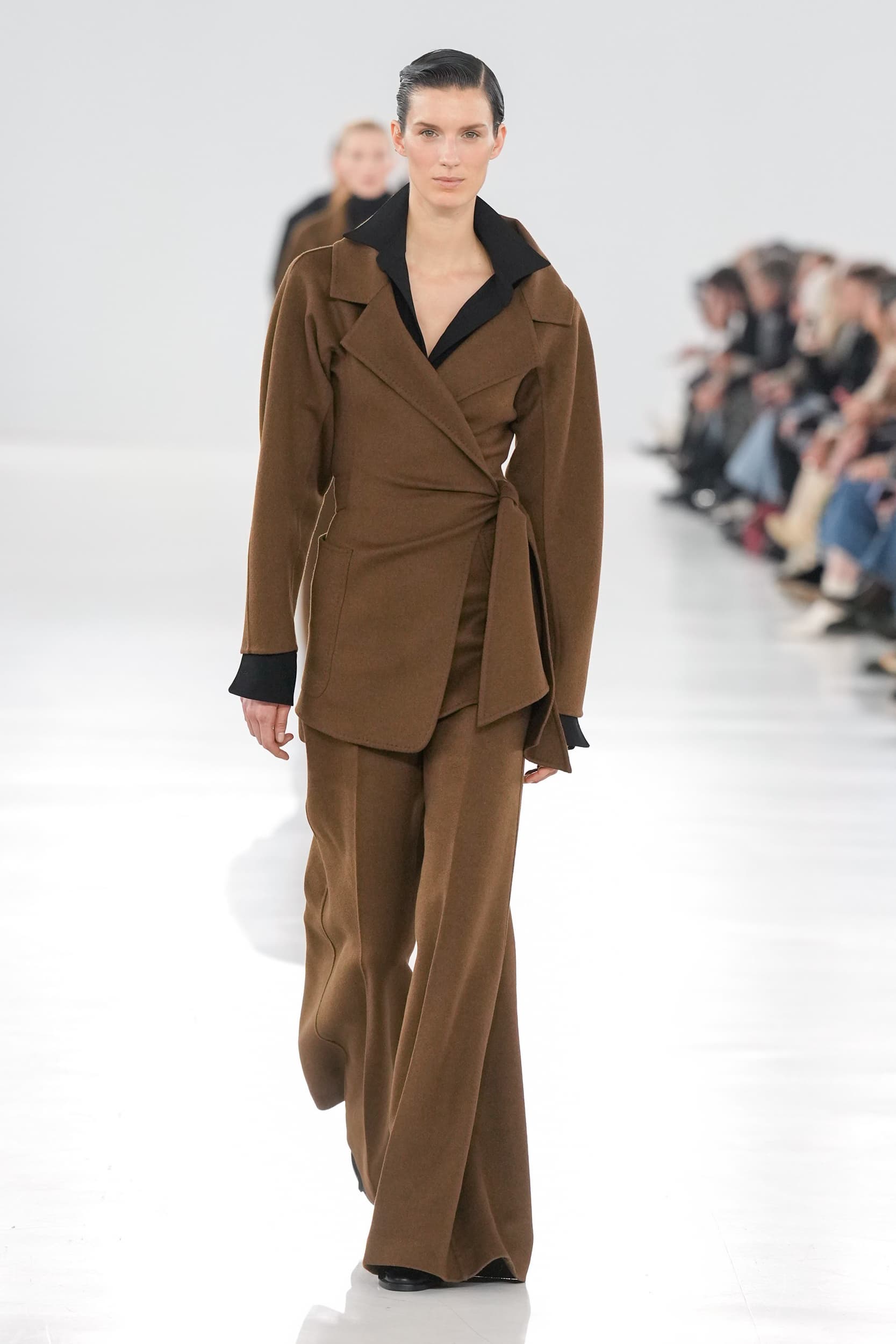
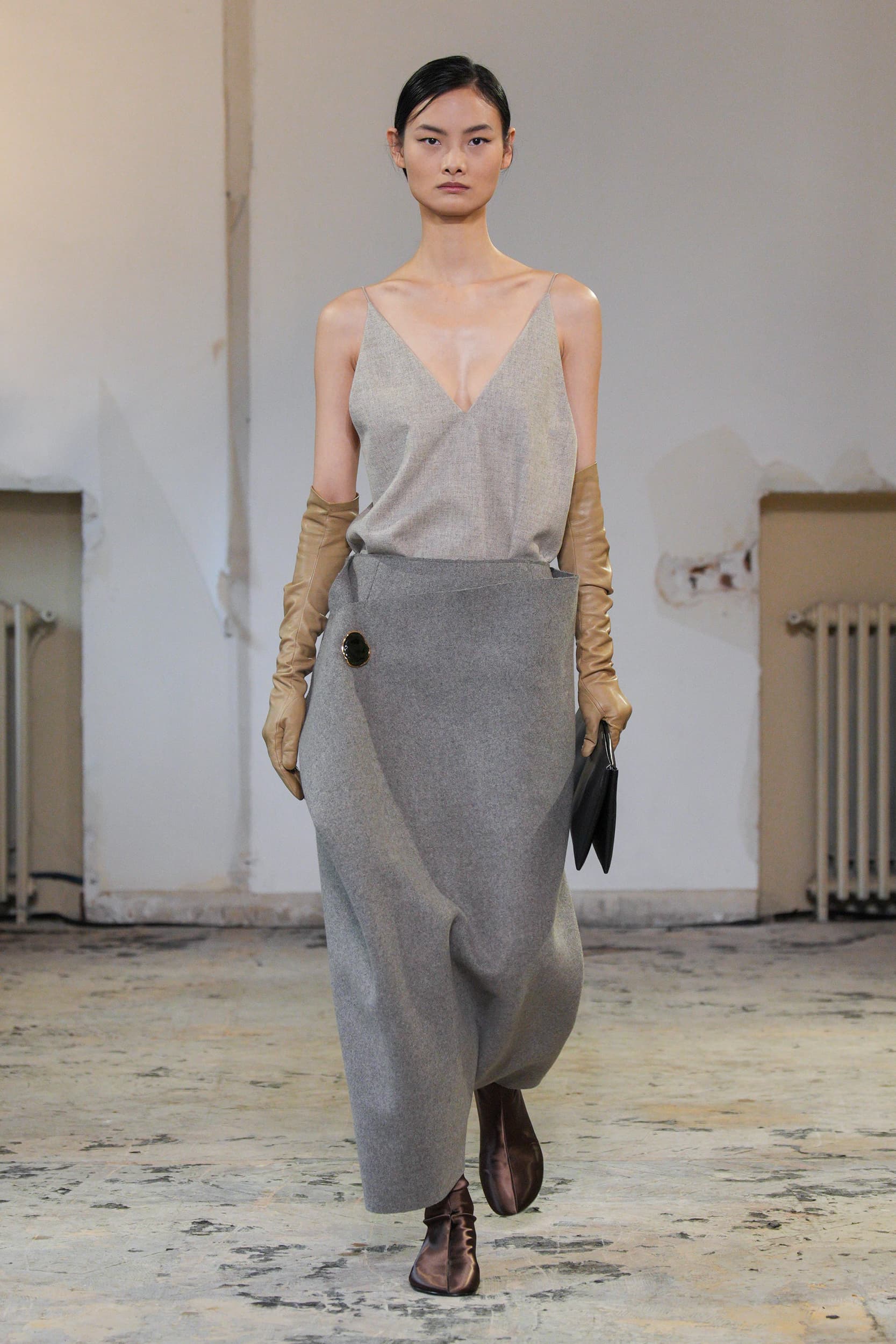
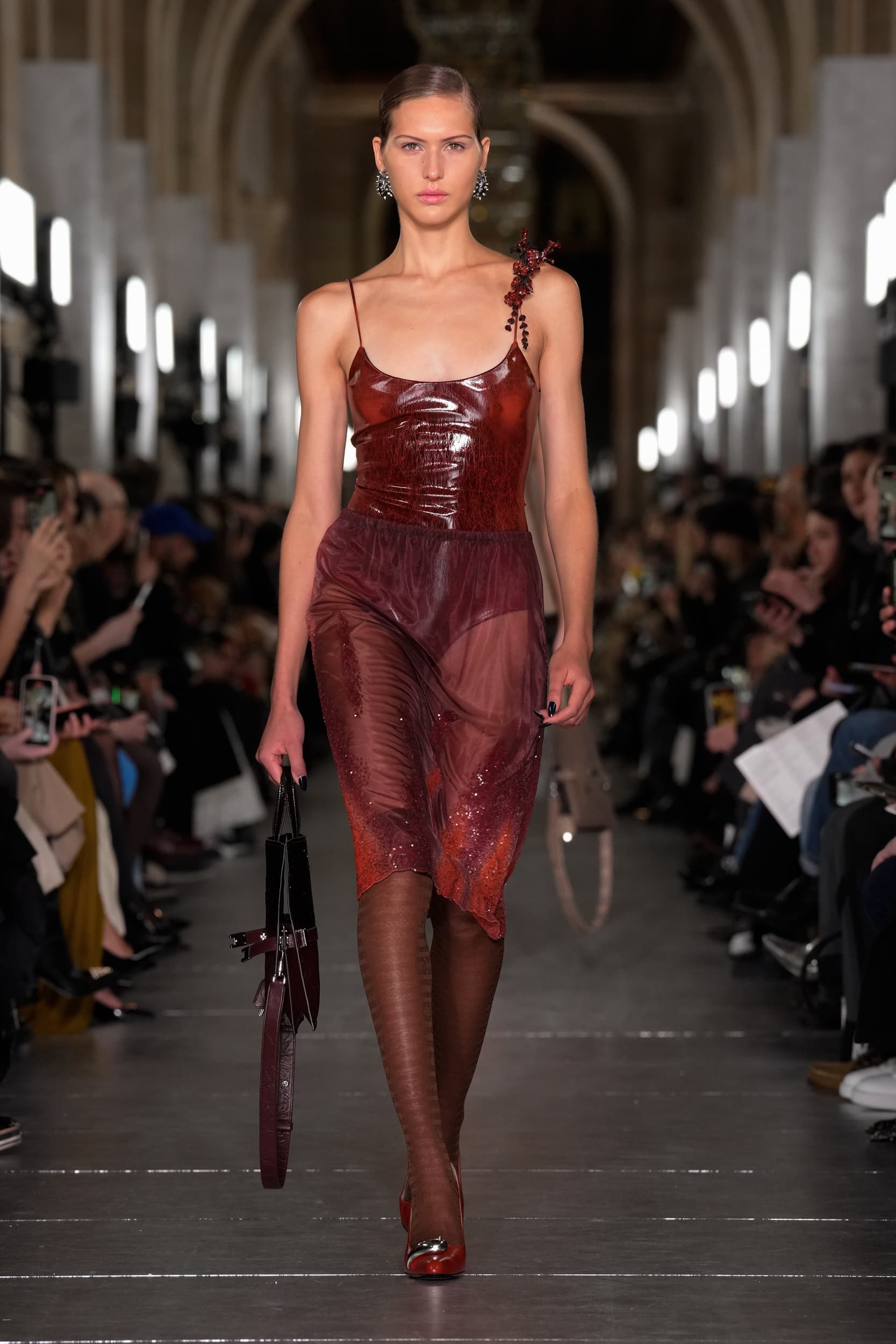
Milan Fashion Week: Spring 2025
Milan, also benefitting from an edited schedule, can boast of a reputation of retaining its heavy hitters, as there is a fierce loyalty which Italian brands have for the city. Minus the absence of Tom Ford (always a star draw, but now on the hunt for a new creative lead) the city will be one-to-watch as the majority of its designers still find value in catering to the aspirational consumer. The problem to solve will be in making the season memorable with collections that illicit an emotional response. After several seasons of ‘Quiet’, considered clothing designers need to ramp up the drama to inspire positive purchasing behaviour come Spring 2025.
It’s sure to be business-as-usual at Prada who are fresh off a set of industry-beating results, and Adrian Appiolaza’s Moschino is showing promise as the designer is getting a firmer grip on the brands archive and what surrealism has to say to us today – in a world that already feels like a constant simulation. Del Core and Sunnei are two brands who bring an under-the-radar energy to Milan and are often standing room only at their shows, whose themes have traversed collaborations with carpet manufacturers (Sunnei) or featured dresses created for unbridled fantasy and grounded by deconstructed tailoring.
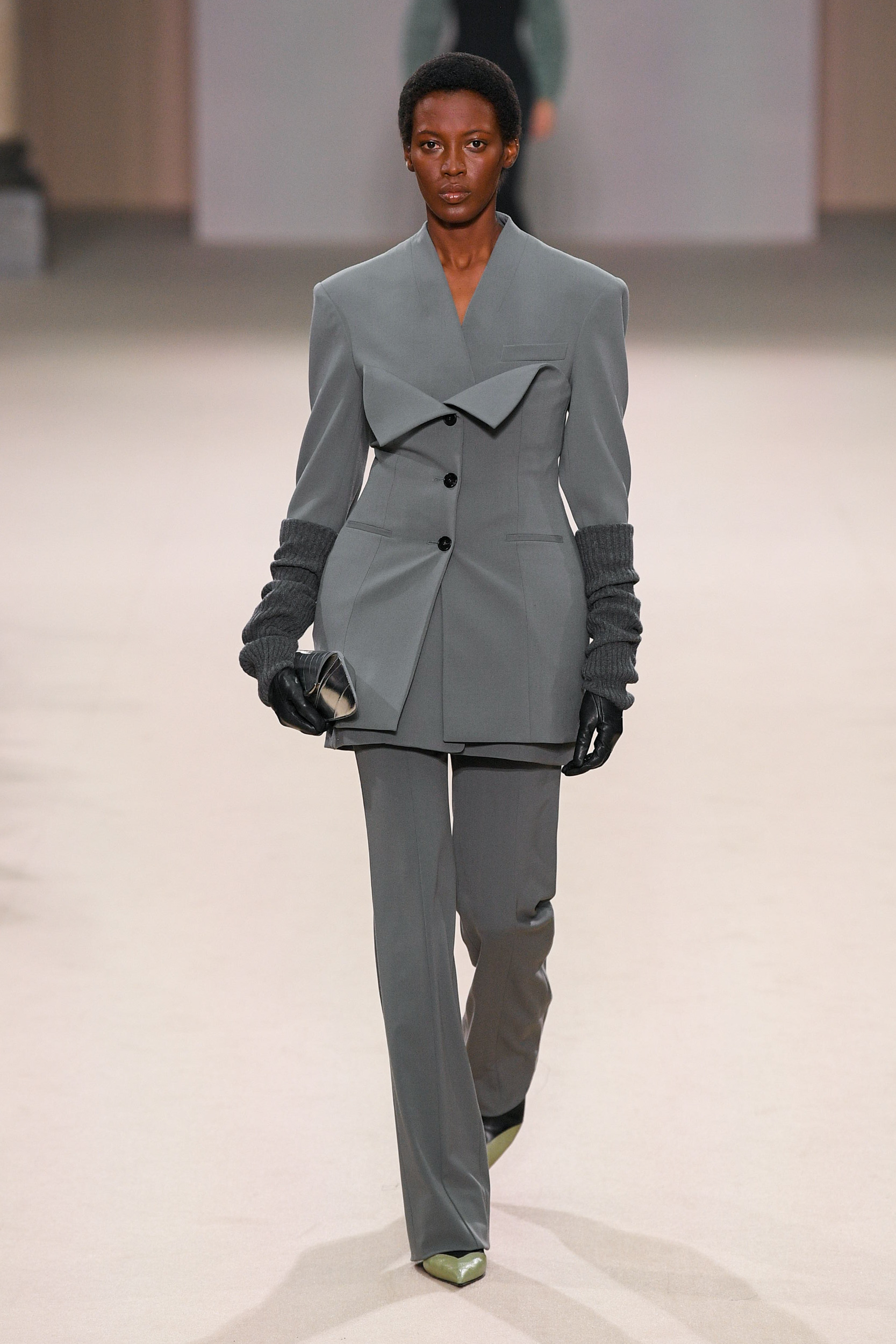
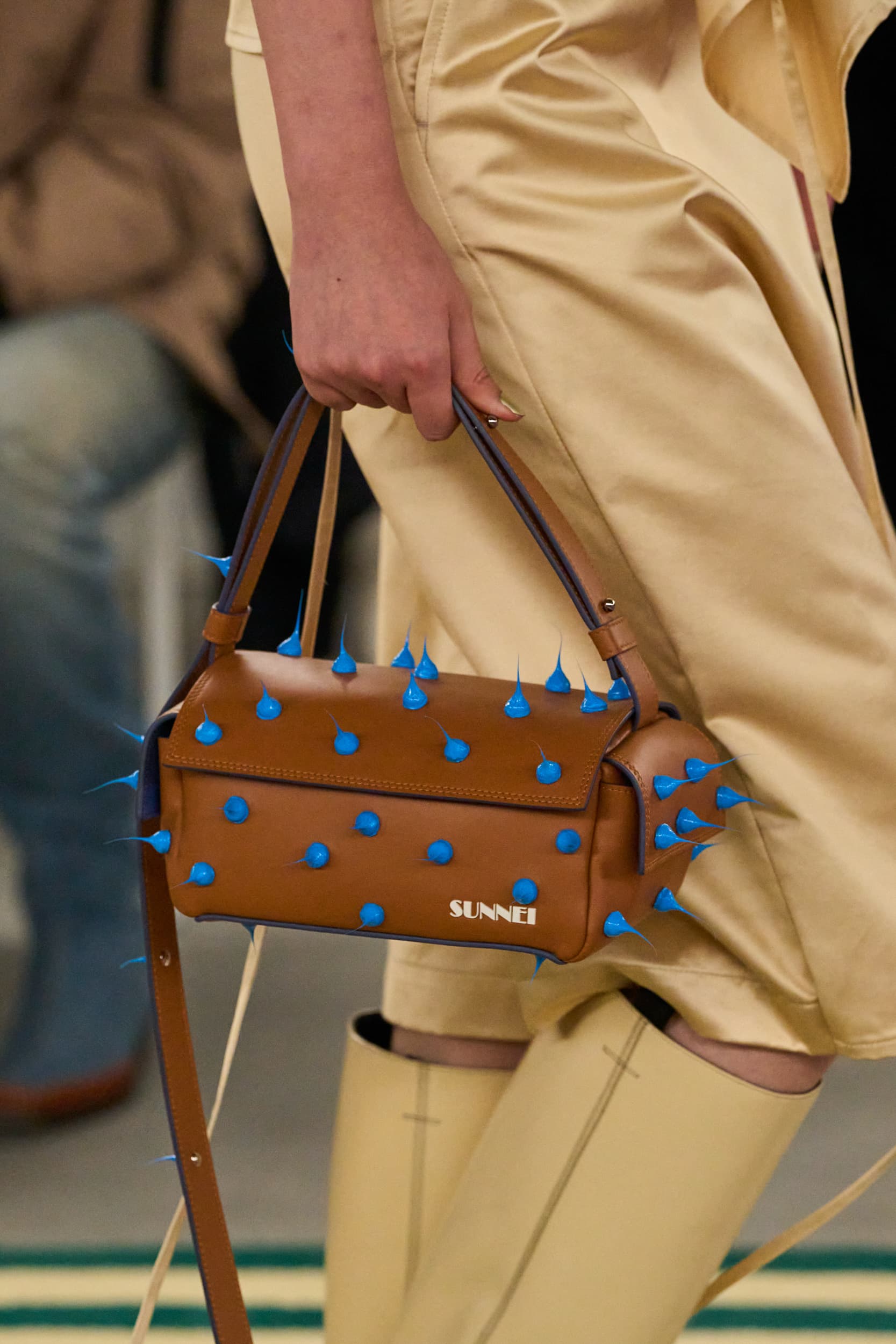
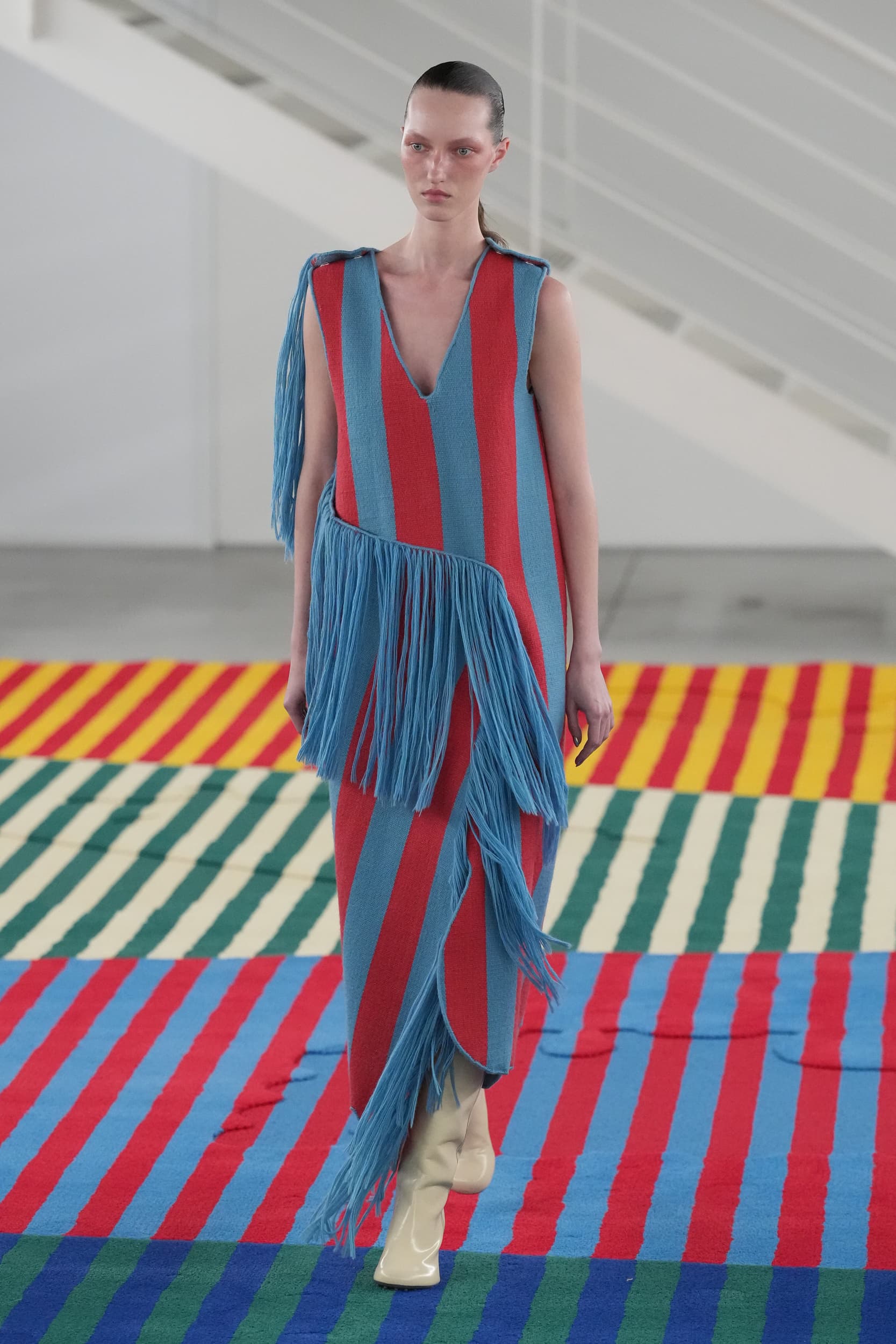
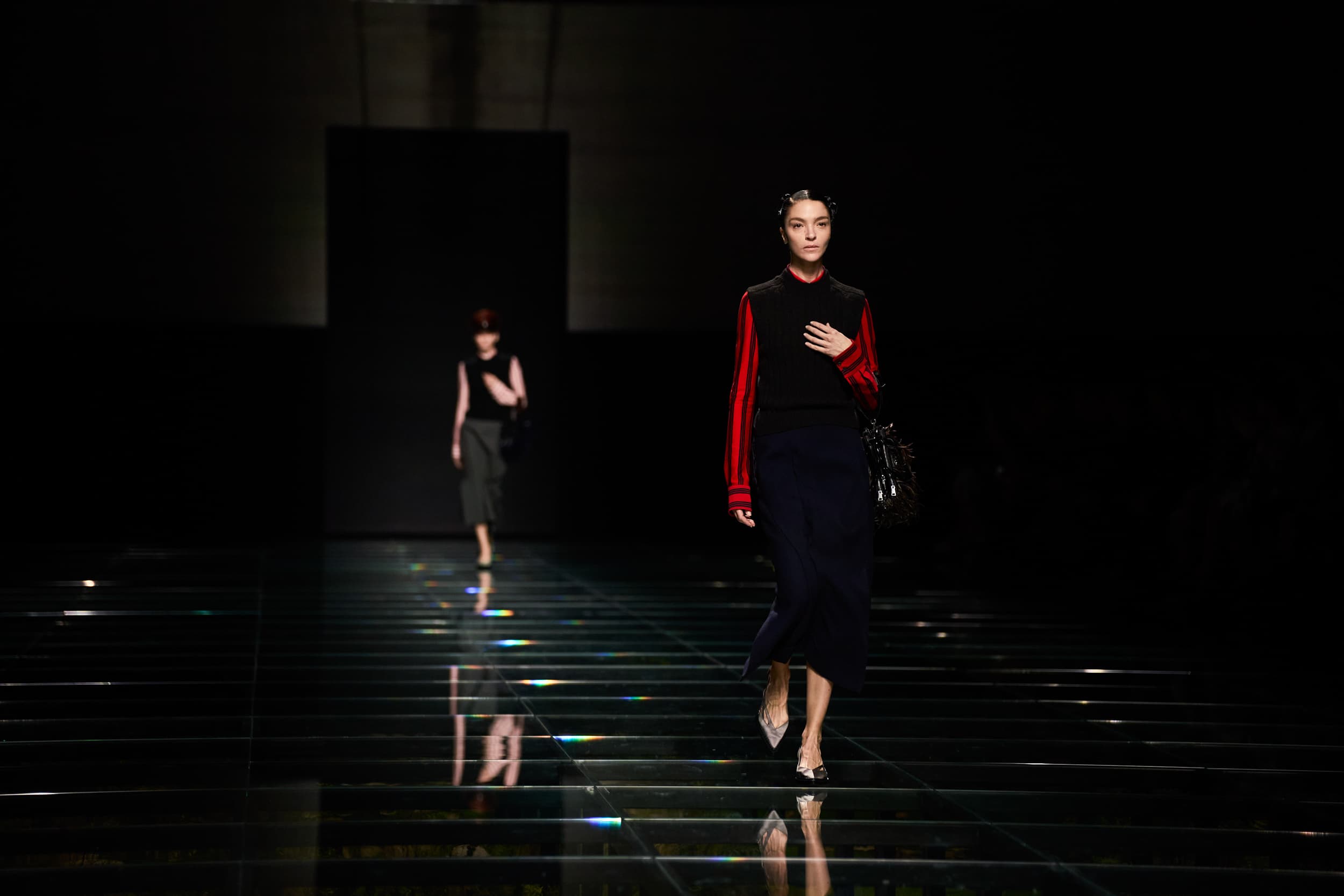
Having reported concerning figures, Ferragamo is also in a period of transition but is doubling-down on its strategy to focus on evergreen products and creative director Maximilian Davis’s new design direction for the house. With this backing Davis would do well to continue establishing who his Ferragamo woman will be, as his collections, where his lines are sharp and his silhouettes are controlled – either cocooning or swathing – really speak to the strength of character of the contemporary (read younger) Italian woman. His way with surface texture and textile is also what is setting Maximilian Davis apart on the Milan calendar, from glossy leathers to chubby furs, and liquid sheers. His is a slow and studied brand evolution that is unfortunately coming at a time when fast results are preferred, but Davis is an example of where the C-suite should back their creative decisions as well as their financial ones.
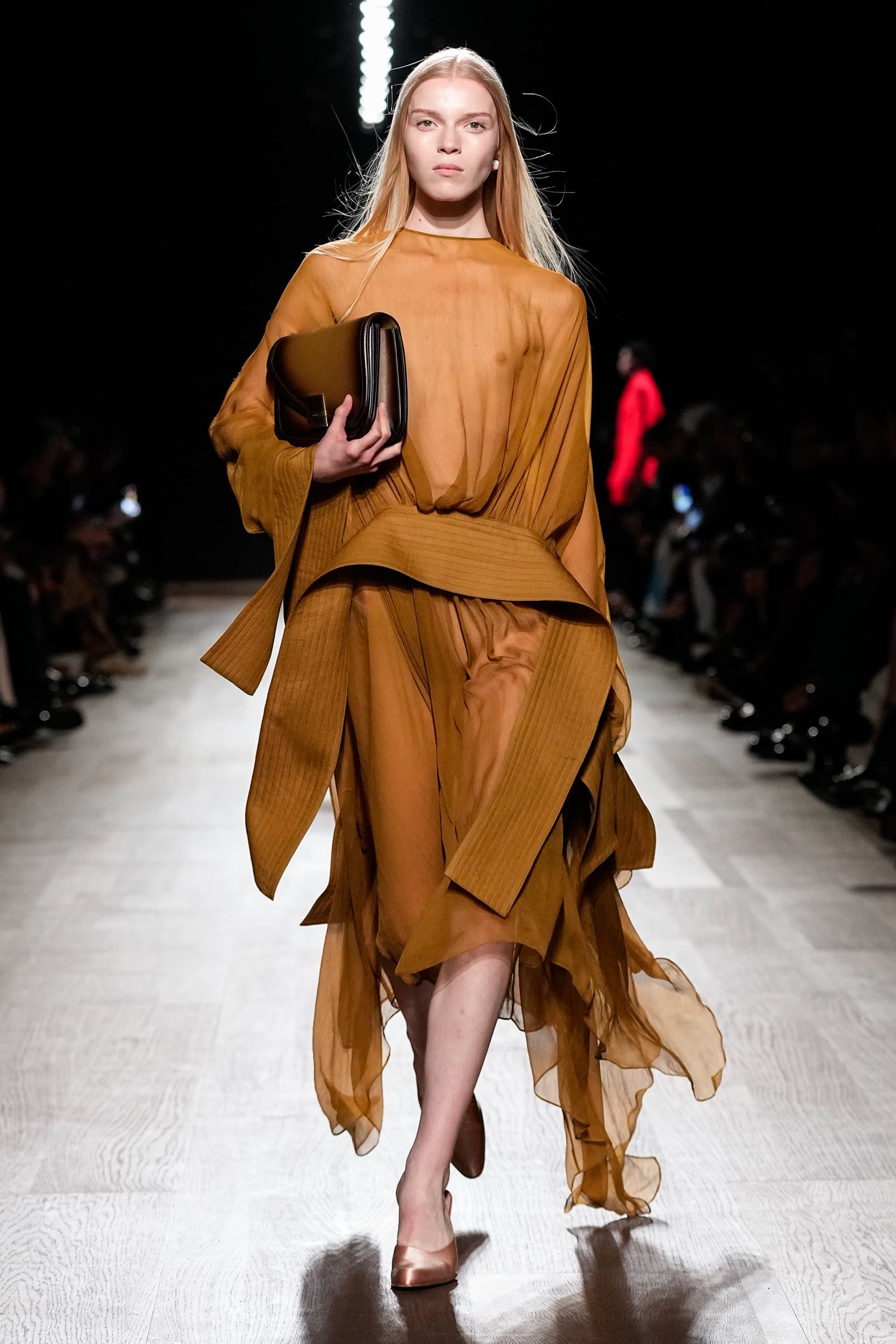

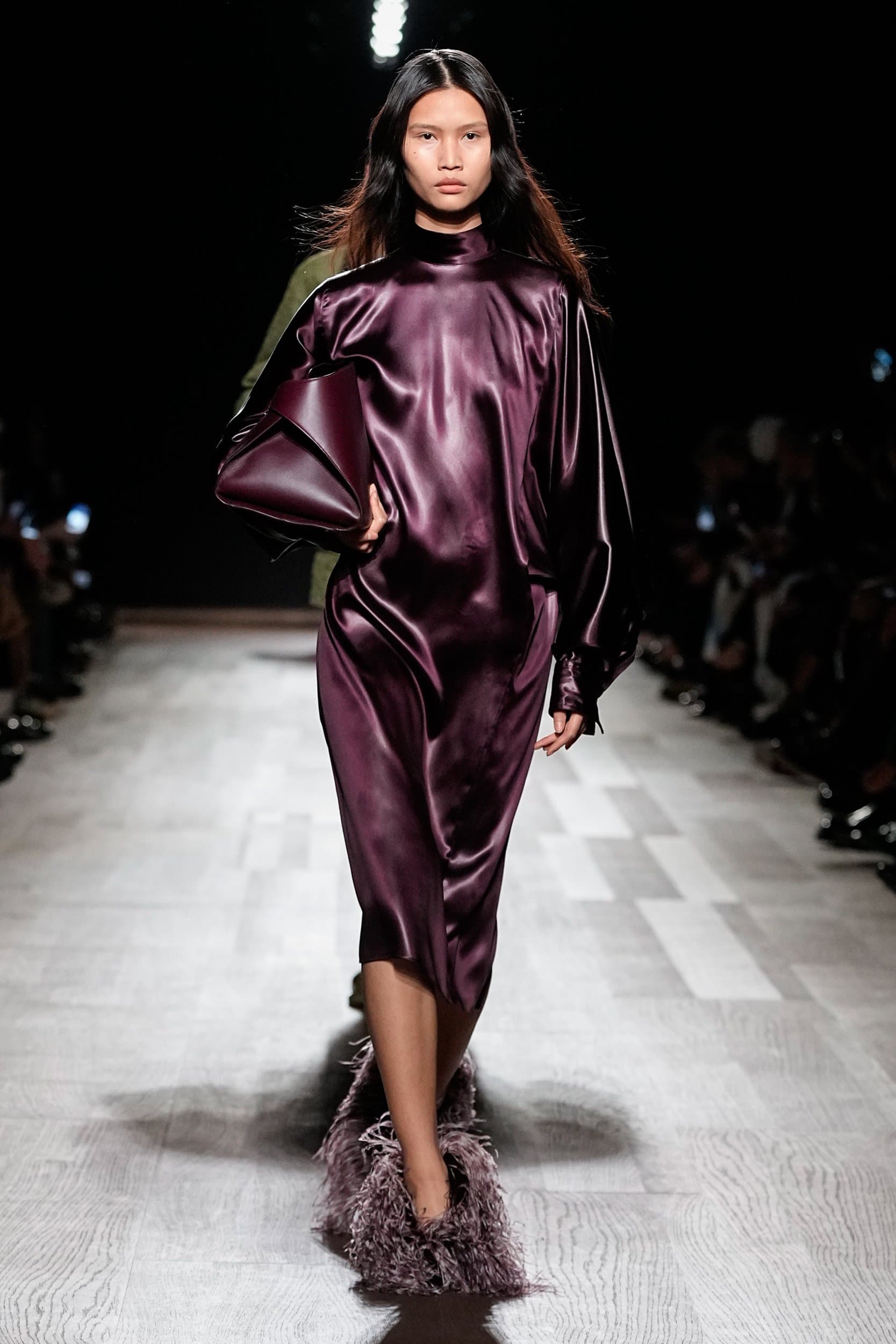
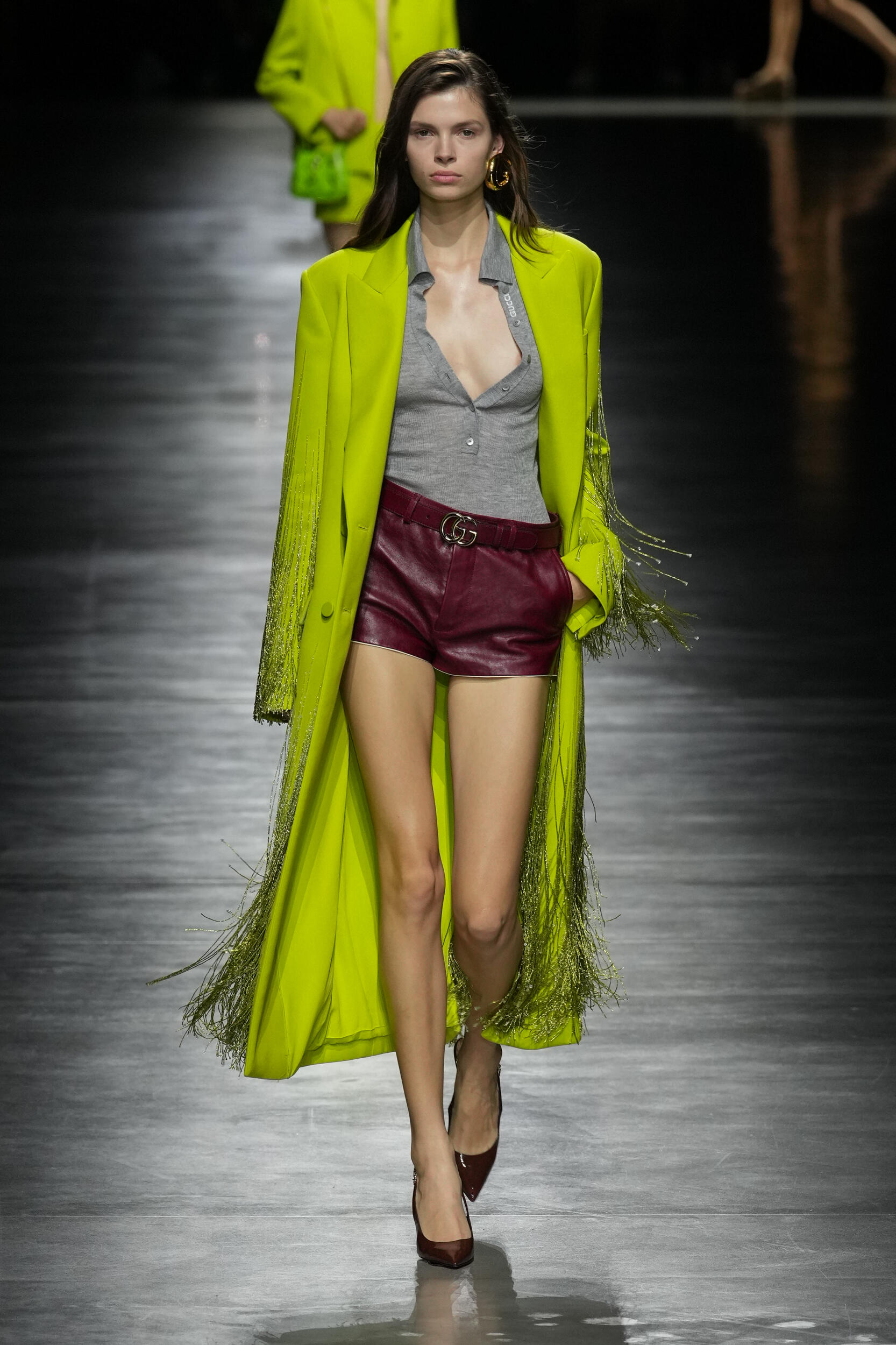
Sabato De Sarno has been given the time and headspace to establish the foundations of his version of Gucci, which is a colour-coded hark back to classic Italian style, with a side of souped-up sexy (ultra short-shorts, anyone?). His first three womenswear outings have been a study on the perfect silhouettes and the capabilities of the houses’s ateliers, but when De Sarno gives us a showstopper we are given a glimpse into how much the New Gucci could push the envelope. From the Lime Green crystal-fringed coat from his debut to the decadent evening looks that spliced lingerie lace with the tactility of velvet. Not featuring more bold statement prints could be leaving money on the table, as at the most recent mens collection in June De Sarno expertly paired his penchant for signature monochromatic colour with co-ordinating resort shirts in graphic patterns. It could also serve as a way to set the creative director’s Gucci apart, and with the mens offering making waves – but also mirroring the women’s collections – it would be interesting to see if Gucci goes co-ed next season.
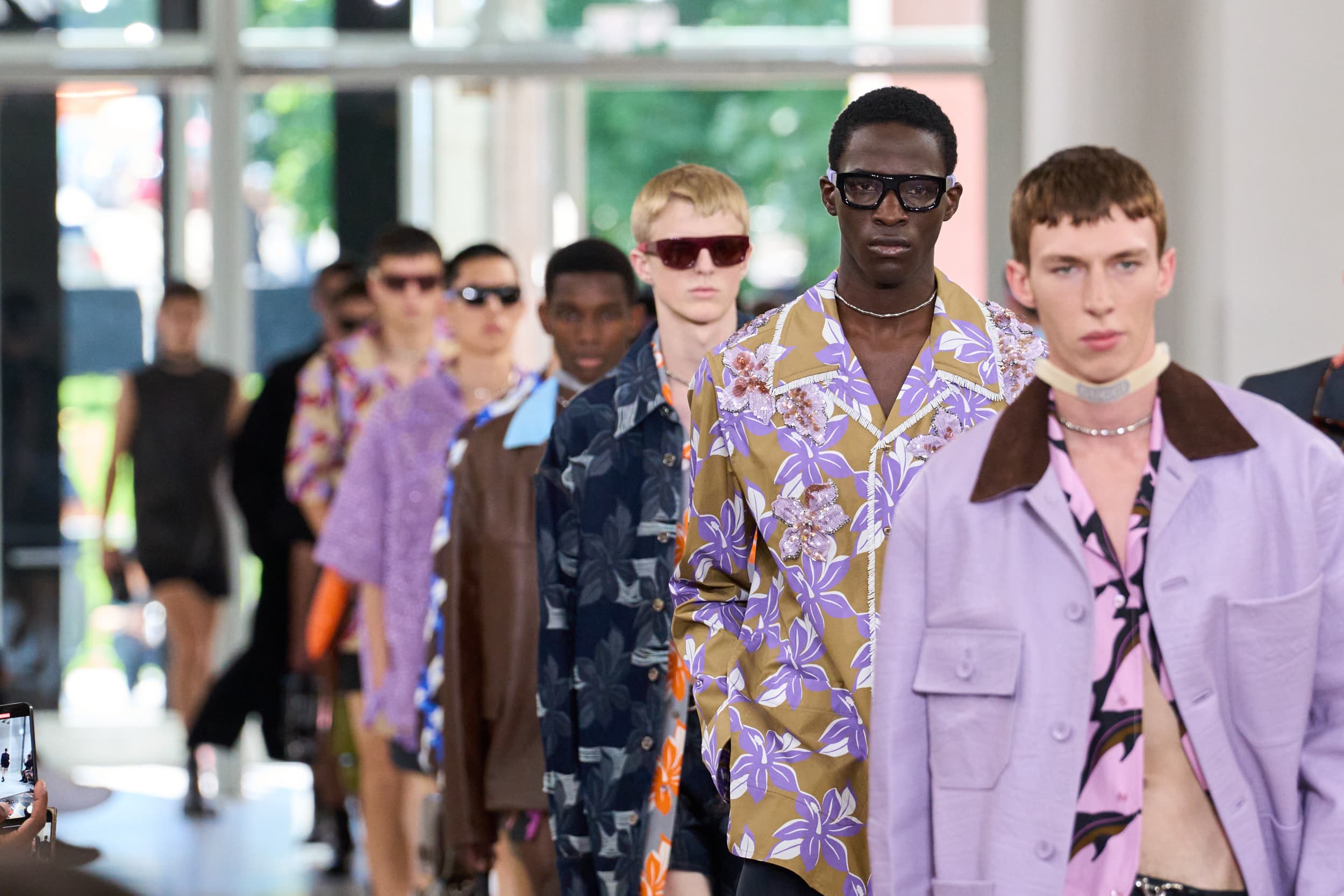
Key Takeaways
Milan has remained a city that is renowned for its focus on celebrating the vivacity of the female form, prides itself on a foundation built on craftsmanship where the ‘Made In Italy’ label still holds weight, and has made space for a new generation of creatives – Del Core, Magliano, Sunnei – to move the needle and shake up what can sometimes be a structured way of doing things.
Known for their loyalty to the city, Milan’s designers must elevate their work to avoid falling into a rut of predictability. Brands like Ferragamo and Gucci are focusing on clear creative visions, but there is a pressing need to create collections that evoke a strong emotional response, ensuring that they remain aspirational and exciting. There are many talented leaders who are still making their mark and reshaping house codes who should be given the opportunity to see their vision come to fruition, but in a time of results-driven decision-making which often only considers the bottom line, it remains to be seen how the landscape of Italian fashion will have shifted when we come to review Spring 2026 in a years time.
